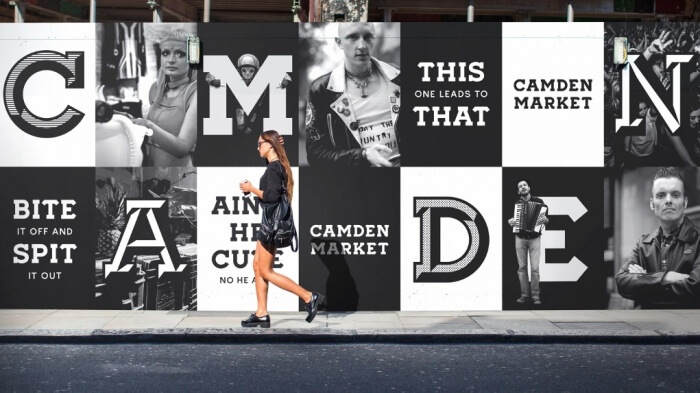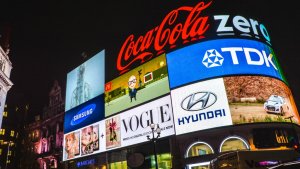Corporations are out, people are in. Consumers are warming to brands with which they can form a genuine human connection.
Thinking Outside The Brand: Why 'Unbrands' Connect With Consumers
Corporations are out, people are in. Consumers are warming to brands with which they can form a genuine human connection.

From BrewDog’s tub-thumping approach with beer to Airbnb’s neighbourhood-driven shake up of the faceless hotel industry, consumers are seeking brands that allow them to form deeper, human connections with the people inside them.
But how do you infuse a big brand with the spirit and individuality of the people behind it? For some brands, an unbrand is the answer. It’s a brave, unconventional approach that won’t be the perfect fit for every business. But it can be a powerful way of creating an emotional connection with your audience – if you get it right.
Same, same but different
Traditional branding was created in a time when businesses were fixed and inflexible corporations, not human-fuelled adaptive companies. Brand guidelines existed so big teams could deliver a coherent, consistent brand identity across every touchpoint in every continent. No contact was required.
But that’s not how we want to work anymore, and this rigidity comes at a cost. Namely, the individuality and passion of the people living their brand.
Unbrands are built for the age of the creative class, when assets and principles construct a coherent identity, but rules are replaced with context and characters. An unbrand is designed with the flexibility to facilitate the self-expression of local people not head office.
It demands a much more fluid approach, empowering people to capture the spirit of the organisation in an infinite number of ways. It allows them to take ownership of the brand, without losing its core essence.
Look at Byron, an example of a very successful unbrand, which has challenged the definition of what a brand should be. While the brand’s comms are relatively consistent, the most important expression of its identity – the restaurant itself – is different every time, right through to the logo above its doors.
The result is a brand that feels like a product of its environment, and the community around it, rather than a cookie cutter restaurant churned out by a corporation. Others have experimented with this approach, but no one else has been brave enough to push it this far.
The cult burger brand has been a runaway success, now boasting 52 sites since it was founded in 2007.
I am my MTV
Why does this freestyle approach appeal to consumers? A cultural shift away from the mega corporates means consumers struggle to connect with big brands that feel sanitised, soulless and polished to within an inch of their lives.
Instead, they favour those that are able to provide real human connections. Unbranding brings the people behind the brand to the fore. It also taps into the rise of user-generated content and co-creation – today’s consumers not only enjoy getting involved, they expect to be.
Many content brands adopt a type of unbrand strategy, allowing the content to dictate the look and feel, while the brand provides a recessive unifying framework. MTV’s on-air identity is inspired by internet memes, GIFs and videos provided by viewers.
The brand team gives creative teams a toolbox, rather than a style guide, and is constantly refreshing the brand. The spirit remains the same, but the visual approach is fluid.
Unfollow convention
Any marketeers considering an unbrand, should bear in mind that it is not the right solution for every culture. The risk is a lack of coherence - the very thing brands are usually designed to avoid. Push unbranding too far and the elements will feel too disparate.
An unbrand needs sensitive stewardship and an open-minded approach. Camden Market felt like the perfect candidate.
As a centre of alternative counterculture for decades, creating a corporate brand for Camden Market would have alienated its core audience. Instead an unbrand helped to give the market coherence and connect with its diverse groups of visitors, including residents, office workers and tourists.
Inspiration for the logo was taken from the hand-painted Camden Lock sign on the bridge and rather than a strict system, a palette of assets gives users the opportunity to express the market’s unique personality in ways that defy the conventions of traditional retail destinations.
The guidelines explicitly encourage users to experiment, stating “If you’re not pushing its boundaries, you’re not doing it right.”
Making it ‘Googly’
An unbrand requires skill and creativity to make it work, and bravery on the part of the brand owner to allow internal and external users to define their own rules. But that doesn’t mean the approach is limited to organisations of a certain size. Look at Nike – essentially a logo and a typeface, with everything else up for grabs.
Or Google, the world’s second most valuable brand. Google has an undeniable coherence that comes from a simple, distinctive logo, a bold use of colour and a semi-consistent use of typography. But instead of living by a set of guidelines, stakeholders are encouraged to make their own judgements based on a simple question: “Does it feel ‘Googly’?”
Emerging tactics
Unbranding is just beginning to emerge as a way of communicating with consumers. However, in a society where consumers are increasingly mistrustful of corporations and where small is beautiful, it can pay dividends. With the right brand, it can feel disruptive and cut through to reach its audience.
It can also make consumers feel like it truly belongs to them.
Thanks for signing up to Minutehack alerts.
Brilliant editorials heading your way soon.
Okay, Thanks!




